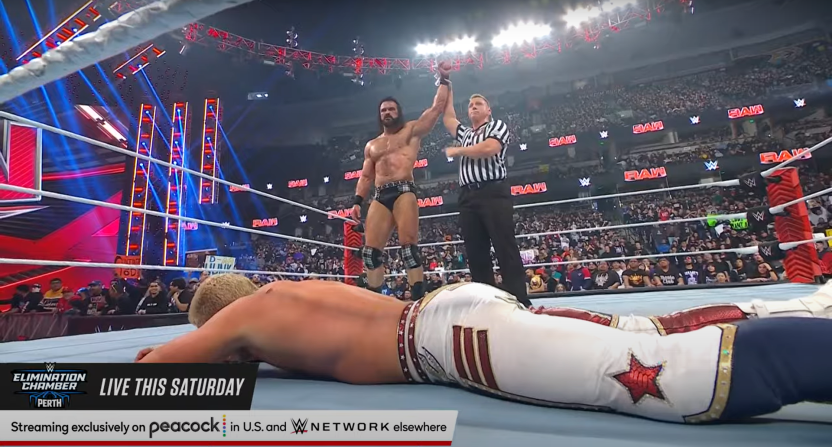In January, WWE announced the hiring of former ESPN executive Lee Fitting, who would replace the retiring Kevin Dunn as the company’s Head of Media & Production.
But while most of the changes to WWE’s production that have occurred under Fitting — who previously oversaw the production of projects including Monday Night Football and College GameDay at ESPN — have been subtle, that wasn’t the case on Monday night.
The latest episode of WWE Raw featured a number of changes to the show’s production, including new camera angles, technological advancements, formatting changes and an emphasis on variety. The changes were so noticeable that even casual viewers quickly identified them.
Nahh these changes to WWE Production are crazy good
— * SIGH * (@Tay_BallOutt) February 20, 2024
You can really notice the change of production in WWE #WWERaw
— Blissful Fiend (@AlexaDaGOAT) February 20, 2024
Who was telling them that Kevin Dunn was doing a good job?
The change in production makes WWE look so much better
— Logan 🇿🇦 (@HulkLogan) February 20, 2024
The first noticeable change to WWE’s production came at the start of the show, which kicked off with a high profile match between Cody Rhodes and Drew McIntyre. Prior to the contest, Raw aired a video package detailing the buildup to the match and what was at stake for both competitors.
Awesome pre-match video package for Cody and Drew🔥 pic.twitter.com/hAVhrVk8on
— ProWrestlingCentral (@WresCentral) February 20, 2024
While such pre-match packages are nothing new in wrestling, they’re also often reserved for pay-per-view programs. But why? If this were college football or the NFL, you wouldn’t only hype up your biggest games of the season — you would promote multiple games each week. And by not airing any promo packages on weekly television, you’re essentially training your audience to believe that the episodes are skippable (and they often have been).
Another noticeable change came following the conclusion of the aforementioned Rhodes vs. McIntyre match, in which announcers Michael Cole and Pat McAfee broke down McIntyre’s victory with a telestrator. While McAfee has used the telestrator on WWE programming before, that instance came in the context of a storyline he was involved in. This time, it was more of a sports-like presentation — albeit with some of the ridiculousness that pro wrestling often lends itself to.
— Cesaro Hot Tag (@CesaroHotTag) February 20, 2024
Perhaps WWE’s most well received production shift on Monday night came in the form of a drone shot in the show’s second hour. The camera began outside of Anaheim’s Honda Center, before traveling inside and presenting a unique view of the sizable crowd.
— @LuigiWrestling (@luigiwvideos0) February 20, 2024
When coupled with the broadcast acknowledging the Netflix executives sitting in the front row and UFC star Michael Chandler using a live microphone to call out Conor McGregor, the swooping drone shot helped to make Raw feel like an actual live event and a happening for the audience in Anaheim, as opposed to just another cookie cutter episode.
There were several other segments that felt ESPN-like too, including rivals Rhea Ripley and Nia Jax taking part in a promo battle while in separate studios, R-Truth and Jackie Redmond taking part in a studio show-styled feature and a breakdown of how competitors qualified to take part in an upcoming Elimination Chamber match. While WWE had employed some of these tactics previously, the emphasis on variety throughout the show was apparent, especially compared to recent years of Raw.
WWE’s new Sports inspired production elevated the product to another level. Telestrator replays, graphics for each wrestler as the go to commercial. B-roll of wrestlers entering the arena, and now showing how everyone qualified for the EC before this last qualifier match #wweraw
— Jeff Johnson (@JeffJSays) February 20, 2024
While some of the changes worked, others — like the telestrator — could use some tweaking. But it would be impossible to argue that Raw didn’t feel fresher on Monday night than it has in quite some time. Fitting’s influence has also been seen in the relative lack of camera cuts compared to the Dunn era. The constant motion of camera cuts, which often reached ridiculous levels, was one of the most widely panned aspects of recent WWE television.
It will be interesting to see what changes WWE continues to make moving forward, as the Lee Fitting era appears to officially be underway.







